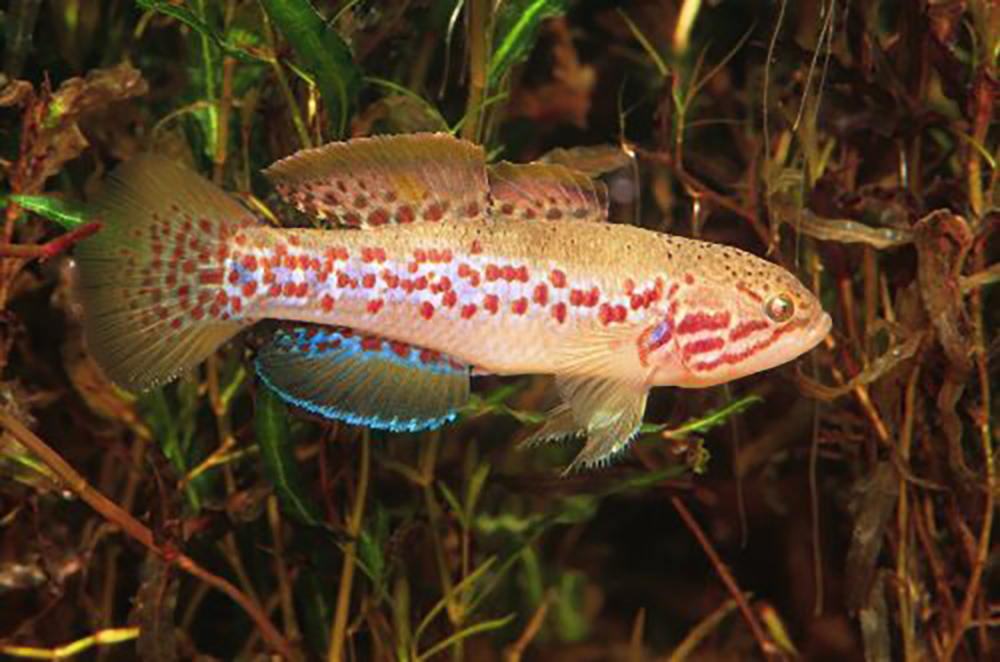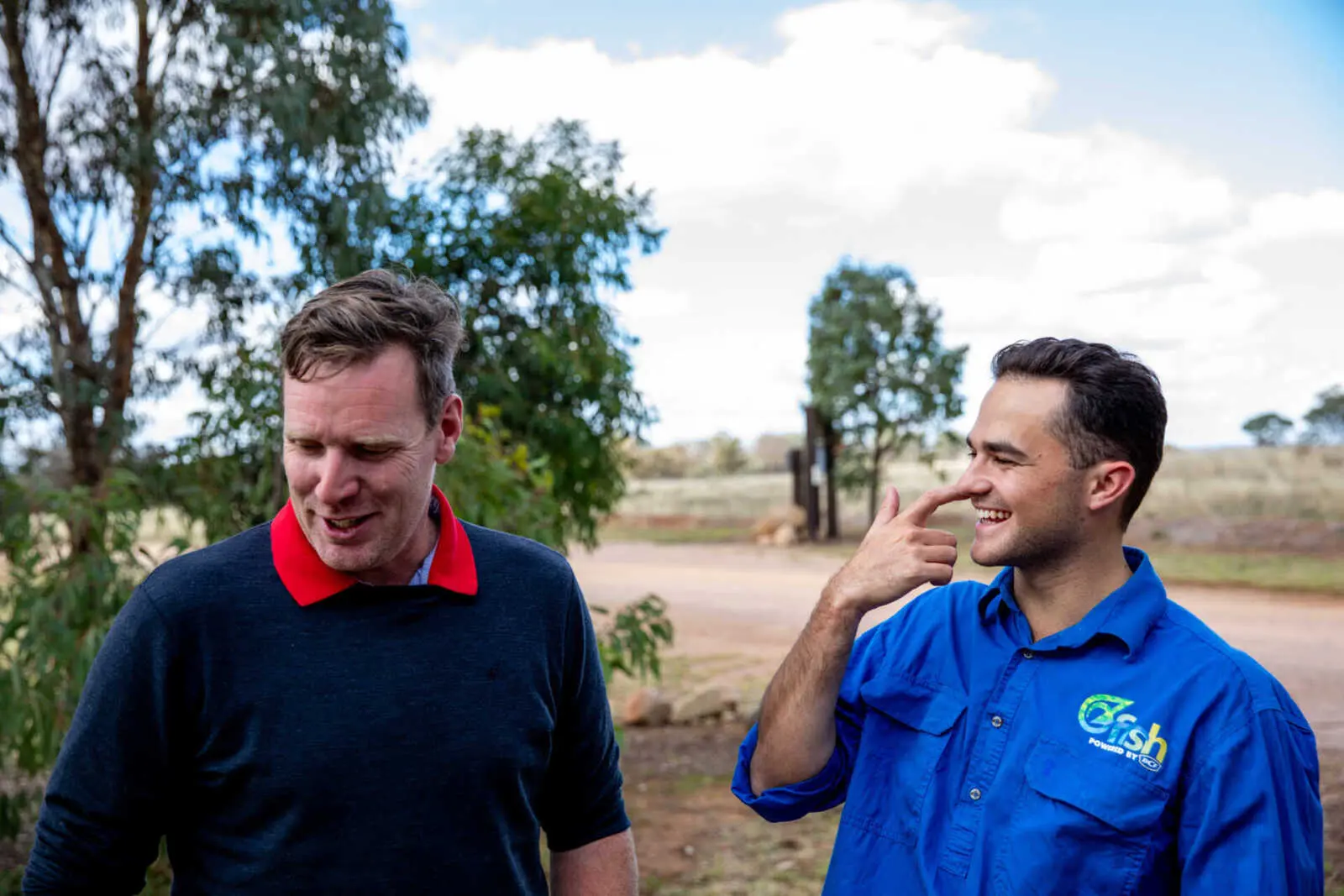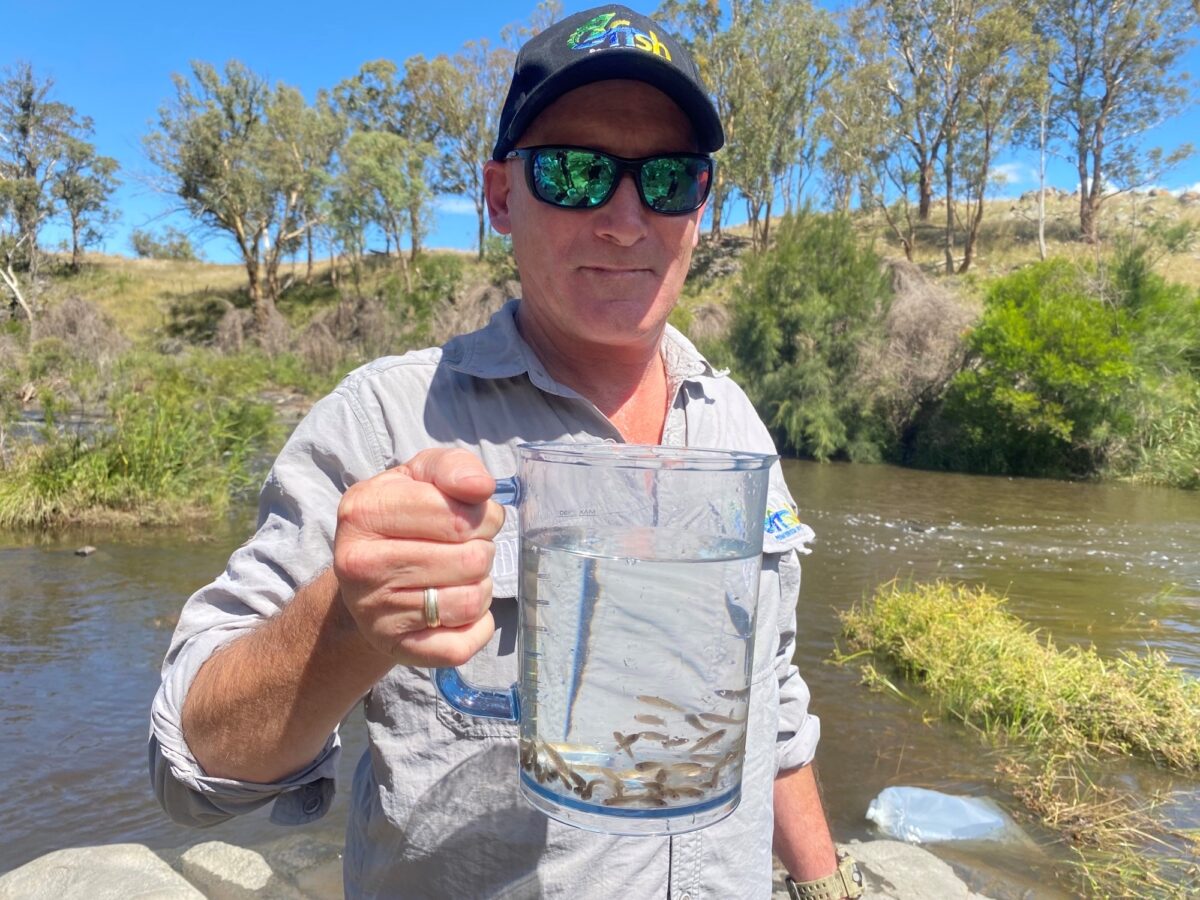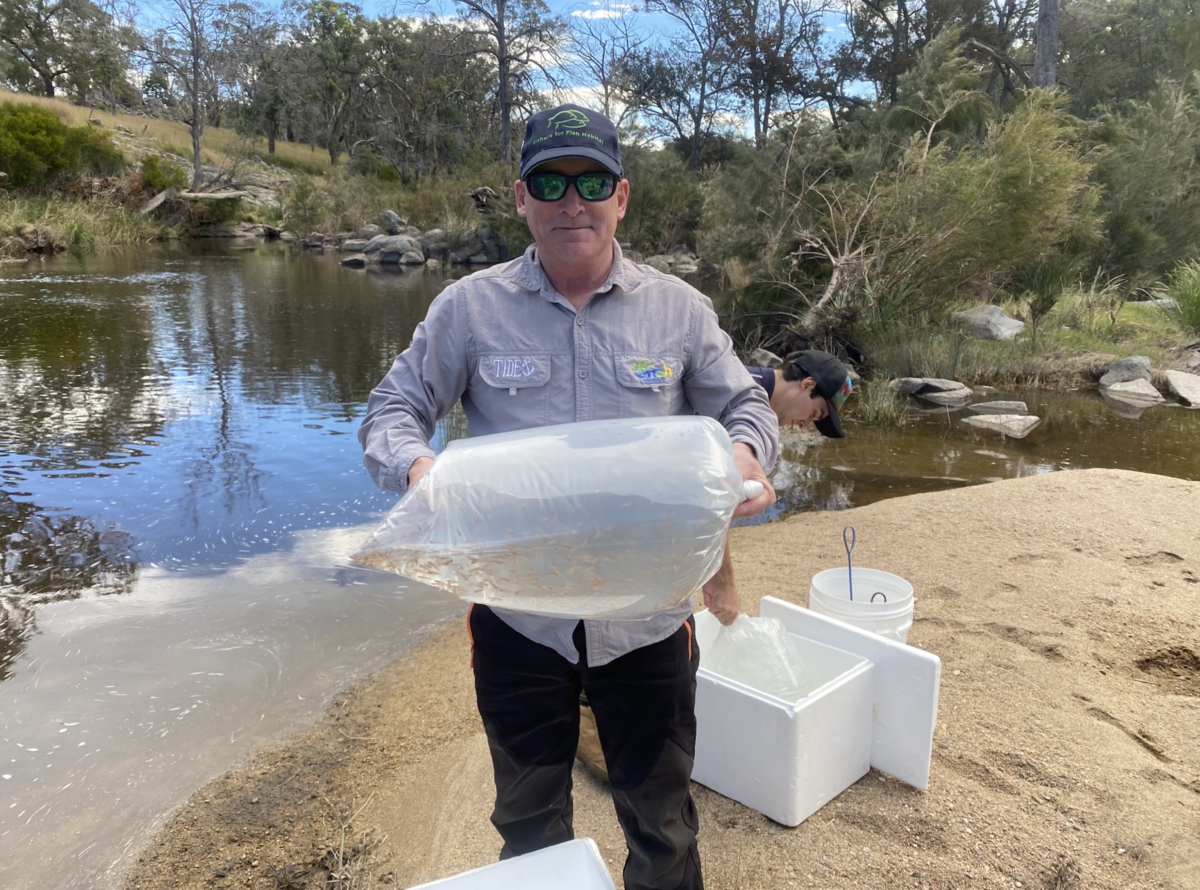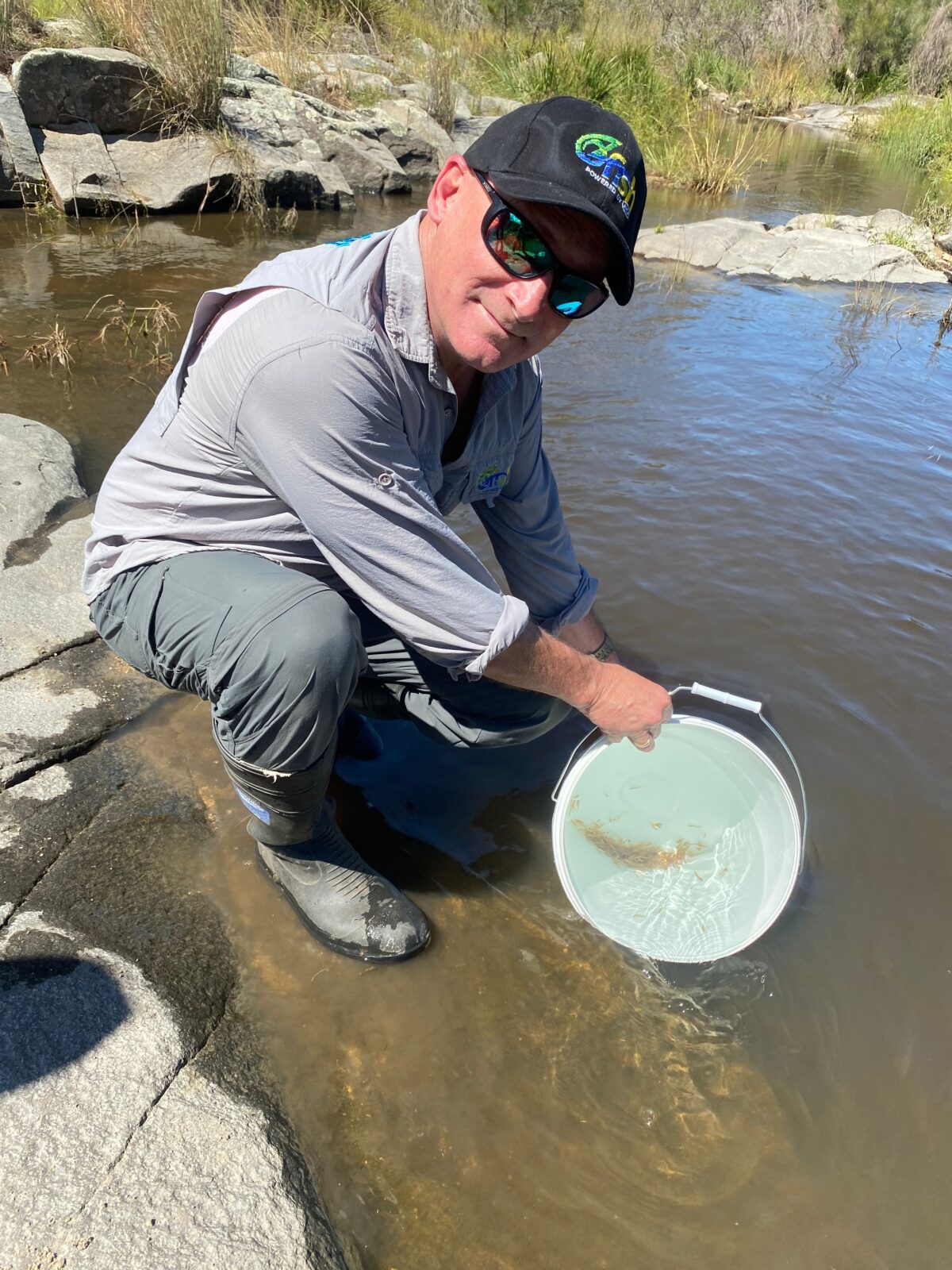Rediscovering the Jewel of the Murray-Darling: The Southern Purple Spotted Gudgeon
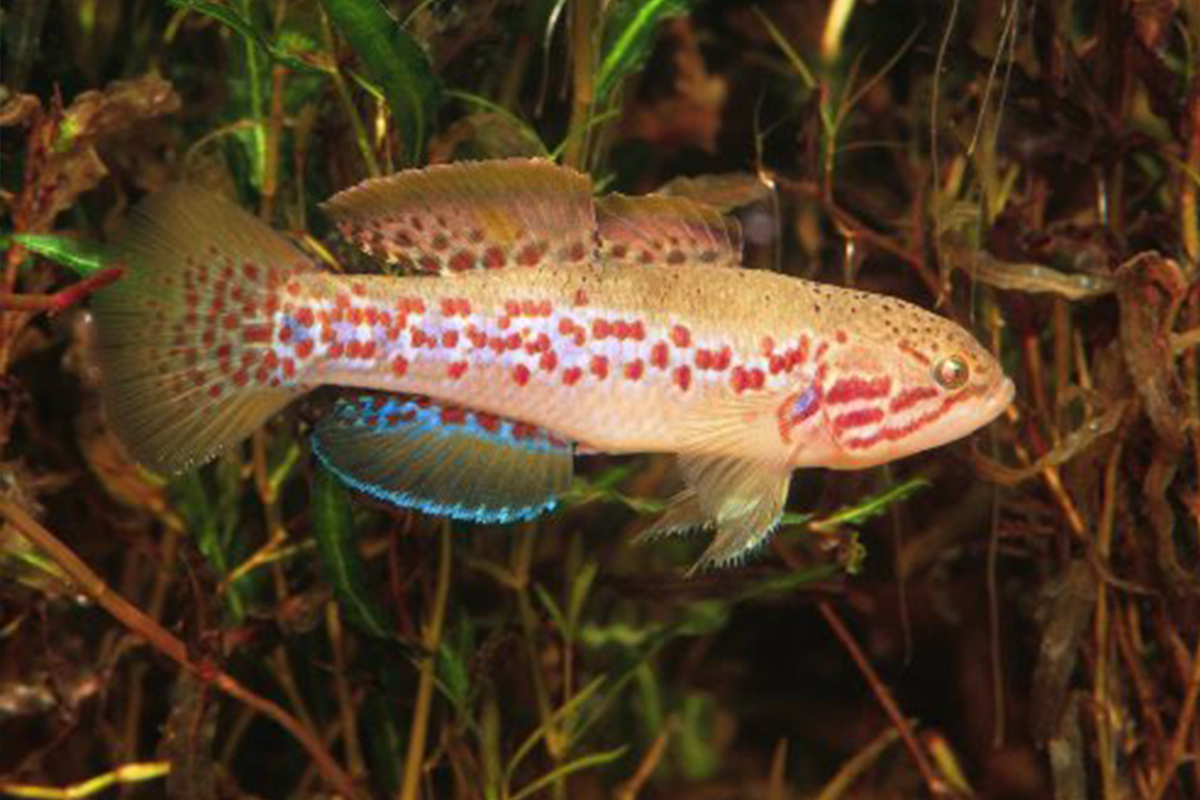
With the constant drip feed of news stories referencing challenges like drought, habitat degradation and invasive species, you wouldn’t be mistaken in suspecting things might be looking grim for our native fish.
With over 20 species of small-bodied freshwater fish in danger of extinction within the near future, it’s difficult not to be disheartened for the long-term sustainability of our Australian species. One small native gem is bucking this trend though; and thanks to a collective of passionate stewards, the Southern Purple Spotted Gudgeon is here to deliver the good news story we need!
Affectionately nicknamed “zombie fish”, their reappearance in recent years in Victorian waterways, after previously being listed as extinct in 1998, has helped to propel them back into the fisheries zeitgeist. Seasoned ecologist Dr Nick Whiterod recently joined OzFish’s Jono Bleakley on OzCast, shedding light on their journey from commonality to near oblivion, and the community wide efforts to ensure their ongoing survival.
The Southern Purple Spotted Gudgeon was once a common sight in the waters of the Murray-Darling Basin and southern Queensland. This widespread distribution paints a picture of a species that was an integral part of the aquatic ecosystem, even thriving as a popular aquarium species. With the ever-compounding threats to their survival however, this presence has dwindled over time, making their sporadic rediscoveries all the more remarkable. These moments of rediscovery are not only welcome surprises but have proven pivotal in reigniting the focus on their conservation.
Dr Whiterod sees the primary challenges facing the Gudgeon as habitat loss and a lack of recognition. The Millennium drought severely affected their natural habitats, leading to a stark reduction in their numbers. Floods too can both help and hinder- providing opportunities for dispersion, but in turn disrupting established populations, posing a threat to their revival. Dr. Whiterod suggests that today we might be looking at only one or two surviving populations in the wild- a concerning statistic that underscores the urgency of conservation efforts.
In response to the Gudgeon’s plight, conservationists are now establishing new populations in carefully selected habitats across the Murray-Darling Basin. Dr. Whiterod shared the example of ornamental lakes in Mildura, where the Gudgeon thrived, showcasing the species’ resilience and adaptability. Similarly, a breeding program supported by Melbourne’s SeaLife Aquarium has seen populations re-released into specialised Victorian wetlands. These instances are beacons of hope, demonstrating that with dedicated effort, a species on the brink still has a fighting chance.
In a boon for NSW Northern Tablelands waters, a brand-new population has been recently discovered in the Deepwater River. Thriving in an area of private land, local landholders have worked quickly to fence off the area, protecting the population to supplement future breeding programs. Local OzFish program officer Harry Davey notes “this new population will bring much needed genetics into our wild Tenterfield populations and will ensure the future of this species”. With the backing of the local community, Harry and the team have released over 28,000 Southern Purple Spotted Gudgeon back into waterways in the Tenterfield area in the last three years, demonstrating that genuine recovery is possible with the right backing.
And while significant progress is being made to restore this freshwater beauty to its former glory, according to Dr. Whiterod, the path to securing a future for the Southern Purple Spotted Gudgeon lies in ongoing research and effective management. Understanding their habitat preferences, breeding patterns, and ecological needs is crucial for developing effective reintroduction strategies. Dr. Whiterod emphasised that conservation is not a static process but a dynamic endeavour that requires continuous adjustment and adaptation to changing environmental conditions and new scientific insights.
In closing his conversation with Jono, Dr. Whiterod expressed a sense of cautious optimism about the future of the Southern Purple Spotted Gudgeon. The potential for further discoveries and conservation successes lies well within the realms of possibility, highlighting the significance of continued research and protection efforts. The journey of the Gudgeon, from being a common resident to a species of concern, serves as a poignant reminder of the fragility of aquatic ecosystems and the need for sustained human intervention to safeguard our natural heritage.
In the broader context of environmental conservation, the story of the Southern Purple Spotted Gudgeon is reminiscent of the challenges and triumphs faced by many other species. It is a narrative that intertwines the threads of ecological importance, human impact, and the relentless pursuit of balance and sustainability. As Dr. Whiterod’s insights reveal, every effort made in understanding and conserving such species is a step towards preserving the intricate mosaic of life that thrives in our waterways. For the fishing community and beyond, the Southern Purple Spotted Gudgeon is not just a fish; it’s a symbol of the delicate relationship between nature and human stewardship, a reminder of our responsibility to the ecosystems that sustain us.
Listen to EPISODE 12: Now You See Me: Why Small-Bodied Fish Are Vital To The Murray-Darling Basin now


